One fall day I looked out the kitchen window and saw a swarm of butterflies flying through the yard. We had a garden full of nectar-producing flowers, so we were used to seeing butterflies during the three seasons of blooming. But this was different. I walked outside and realized that they were no longer relaxed and meandering from flower to flower—they were on a mission—a Monarch migration mission to be exact. And while I stood there, the air filled with the orange– and black–winged beauties! They were everywhere! Some were close enough for me to touch, seeming to fly towards me, then up into the sky, above the tree tops, and beyond! It was awe–inspiring and joy–producing! Millions of Monarchs!
In a matter of minutes within the hour, they were gone, moving south in their annual migration from southern Canada and the northern Midwest, gathering all from the eastern United States, on to central Mexico where they spend the winter high in the mountains on the Oyamel Fir trees. Abies religiosa means ‘sacred fir.’ These trees and the wintering Monarchs require the same ecosystem for survival—cool and moist—which is now being threatened by our warming climate. Climate change, along with increased use in pesticides and herbicides, loss of northern habitat for Monarchs, and logging of the sacred firs have all contributed to the alarming news that was released this past week. The International Union for the Conservation of Nature has placed Monarch butterflies on the endangered list, just two steps from extinction, because of their fast-dwindling numbers. In just ten year’s time, the population of Monarchs in North America has declined between 22% and 72%, depending on the method of measurement. Other groups have seen even larger declines of the iconic butterfly. The most well–known and beautiful butterfly, once with a population in the billions, is headed towards extinction.
Loss of Monarch habitat in the north mirrors the declining number of acres of prairie, grassland, fence lines, and wetlands. There are statistics for these losses, but anyone who loves the prairie, who loves seeing cattle on grassland pastures, and who delights in a fence row of wildflowers has noticed the disheartening change in the last decade.
There is untold value in a prairie environment—home and food source for insects, birds, and mammals; erosion control; and carbon sequestration to name only a few. This time of year, the prairie displays a brilliant culmination of months of unseen root growth and a sea of green vegetative growth of grasses and wildflowers as they burst into flower and seed production. It is a beautiful sight! It was a good year for Butterfly Weed, a member of the Milkweed family. I have seen more of the bright orange flowers this year than I can ever remember.
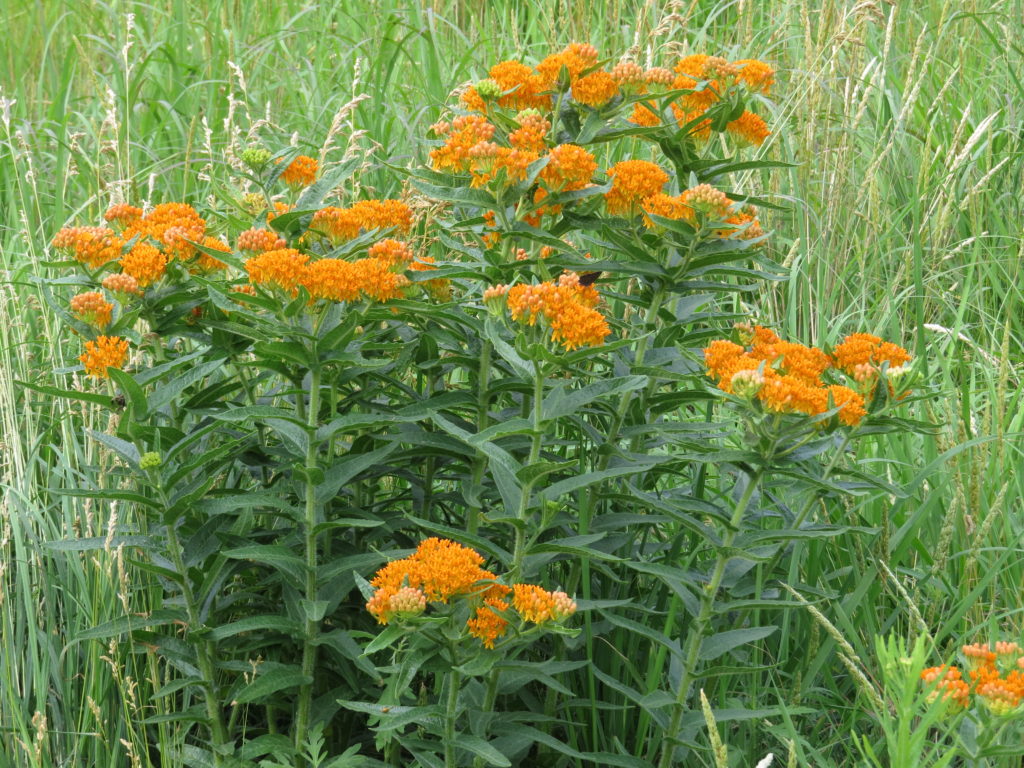
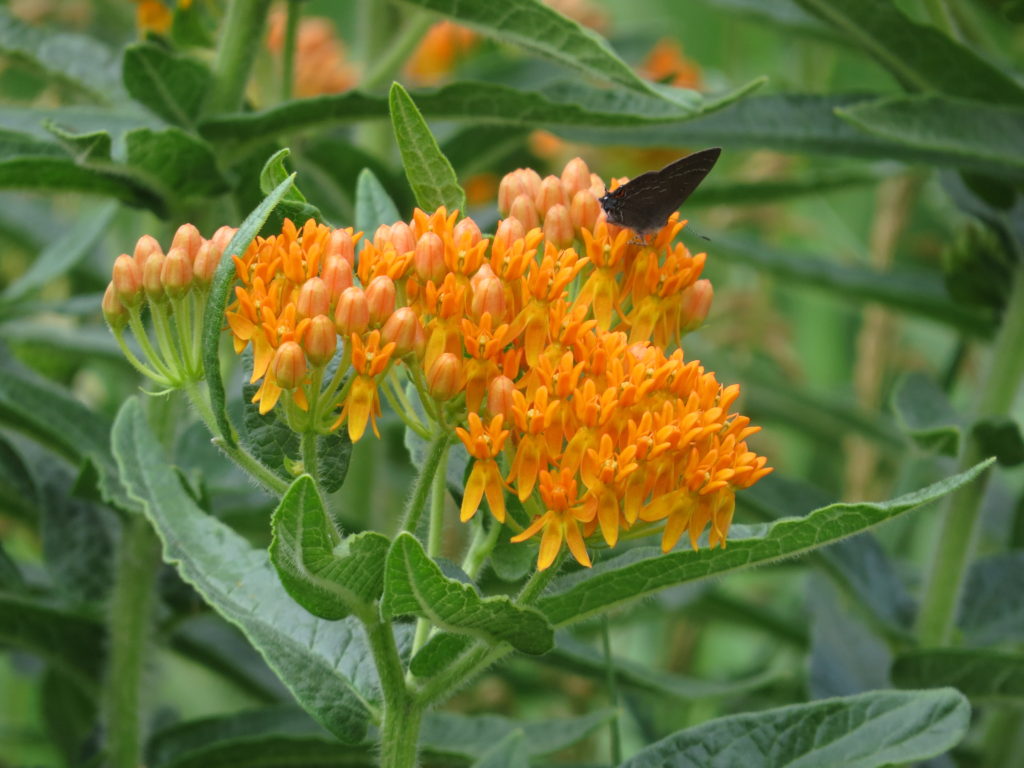
Common Yarrow inconspicuously grows in most grassy places but is a dazzling background for Hoary Vervain’s sharply–toothed leaves and spikes of violet flowers.
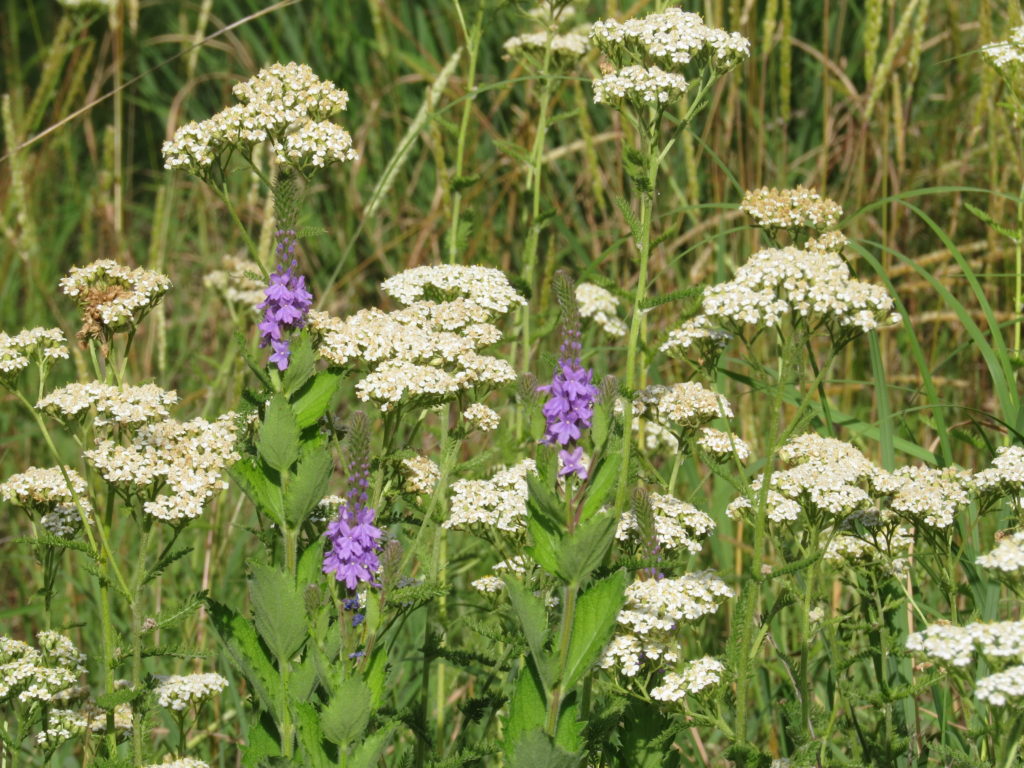
And the grasses….each with their distinct–colored seedheads are the foundation of a healthy prairie.
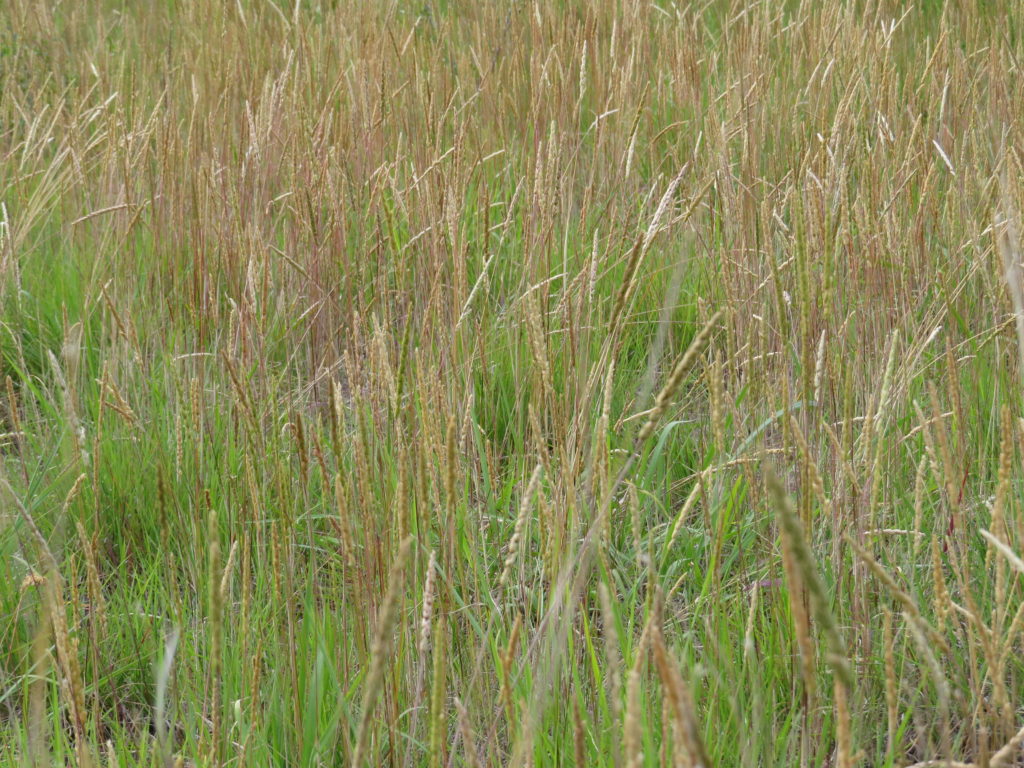
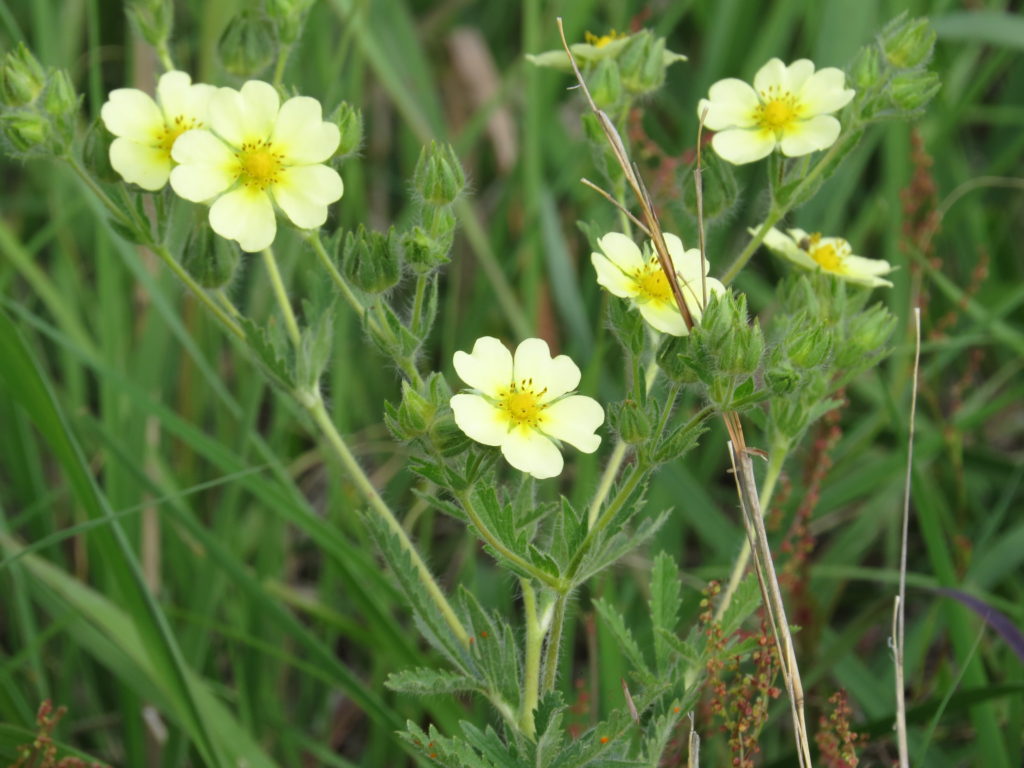
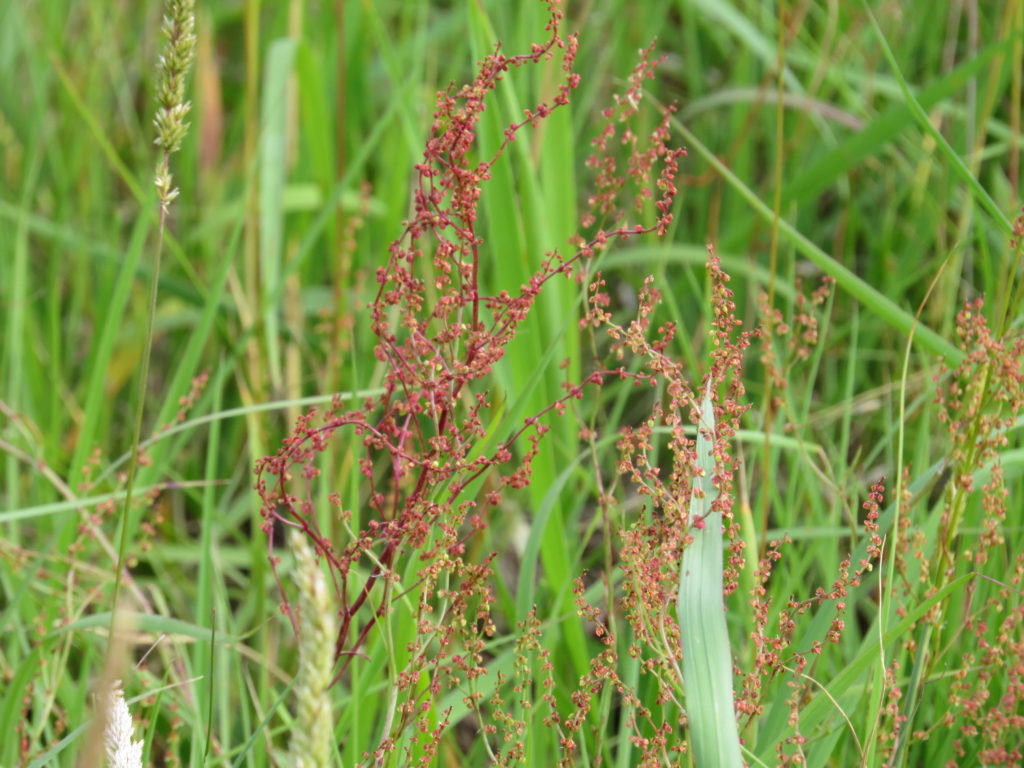
In the acres and acres of prairie, including all the showy Butterfly Weed, I saw one Monarch. I was paying attention—awareness of dwindling numbers of Monarchs has been on my ‘radar’ for years now, and this year seems particularly bad for the numbers. The prairie had many Common Milkweeds, the primary host plant for Monarch caterpillars. Empty homes, waiting for the striped caterpillars to munch on their leaves, spin a cocoon, and produce another butterfly.
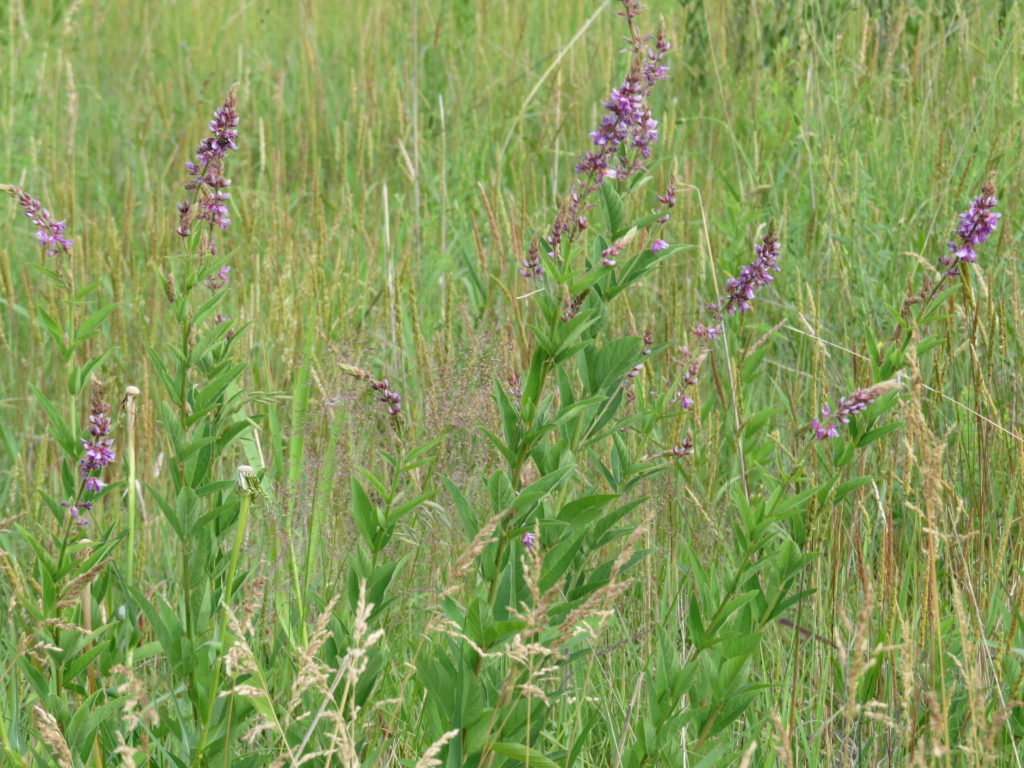
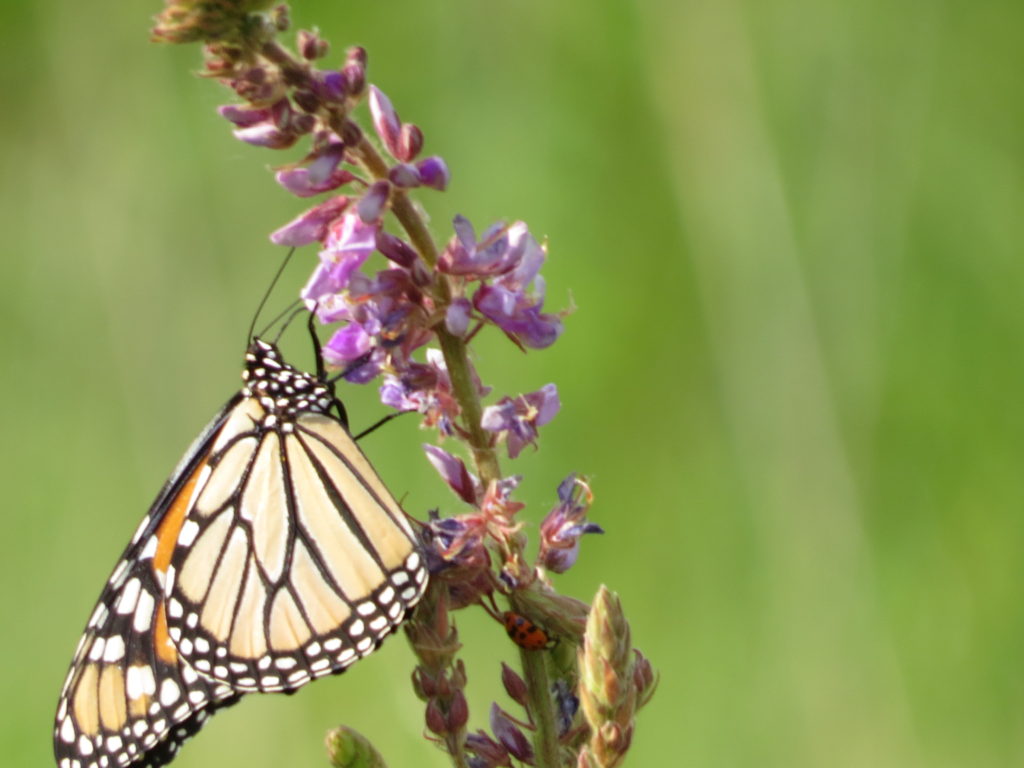
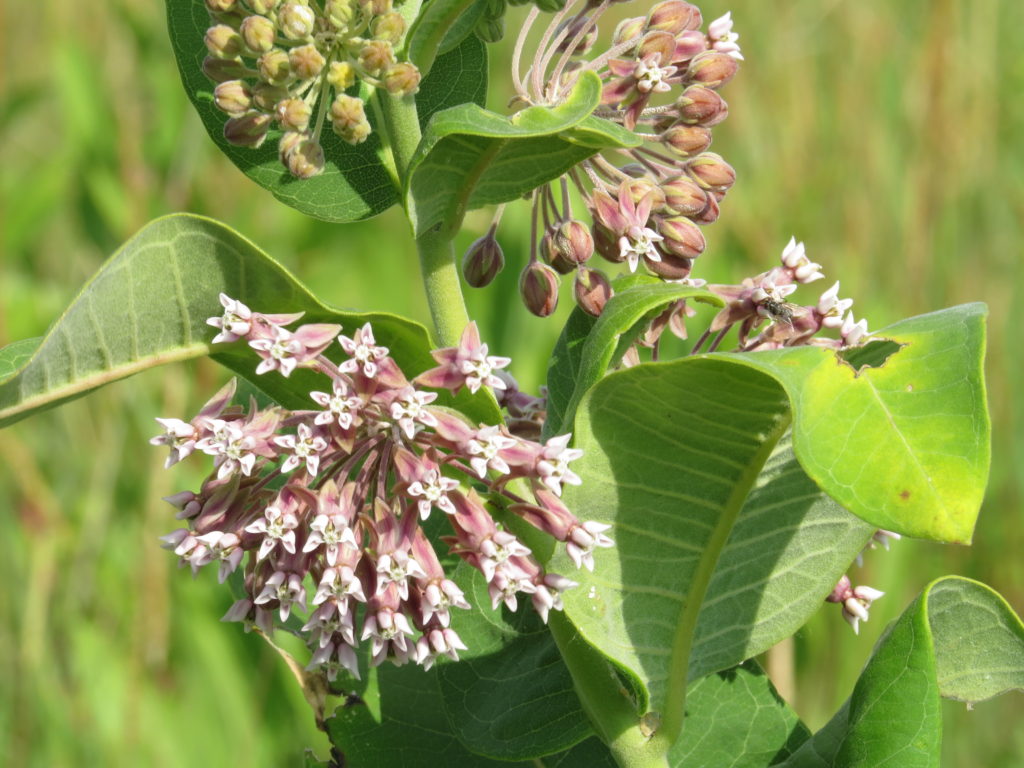
Evening Primrose is a night–blooming plant with buds that start to open at the end of the day and close up by noon of the next day, making them an unusual and enchanting wildflower.
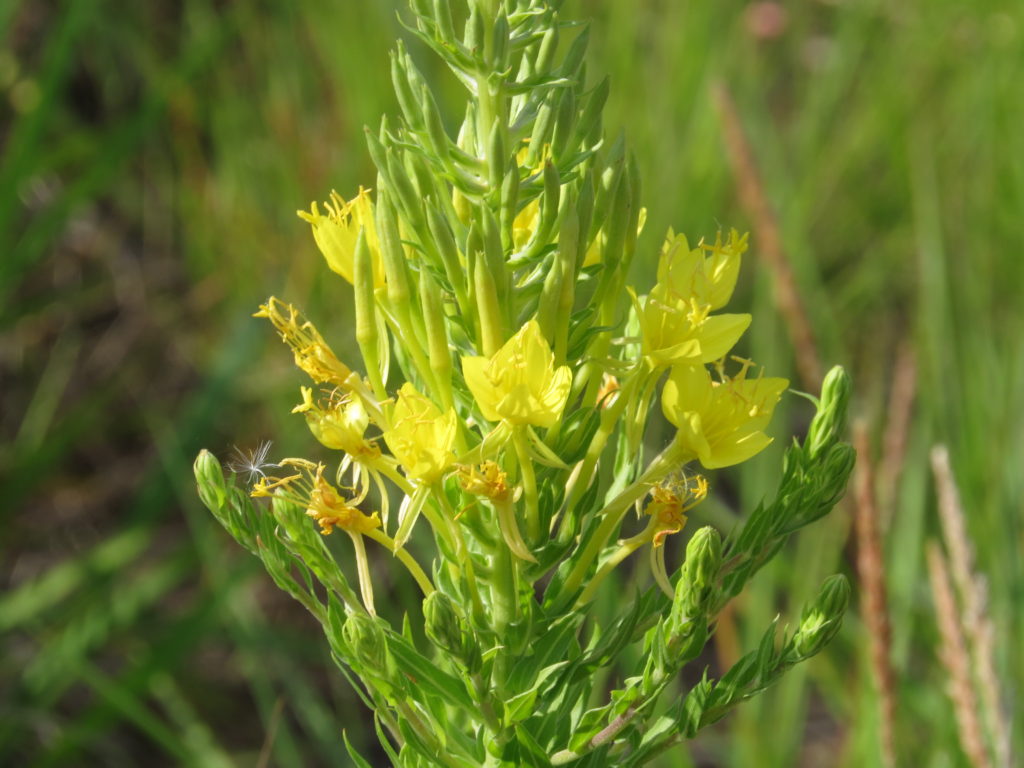
Another favorite wildflower for butterflies is False Sunflower or Ox-eye Sunflower. The prairies that are planted and preserved in parks and natural areas are trying to bring back habitats for the butterflies, bees, and other creatures who depend on wildflowers and grasses for their survival. But is it enough?
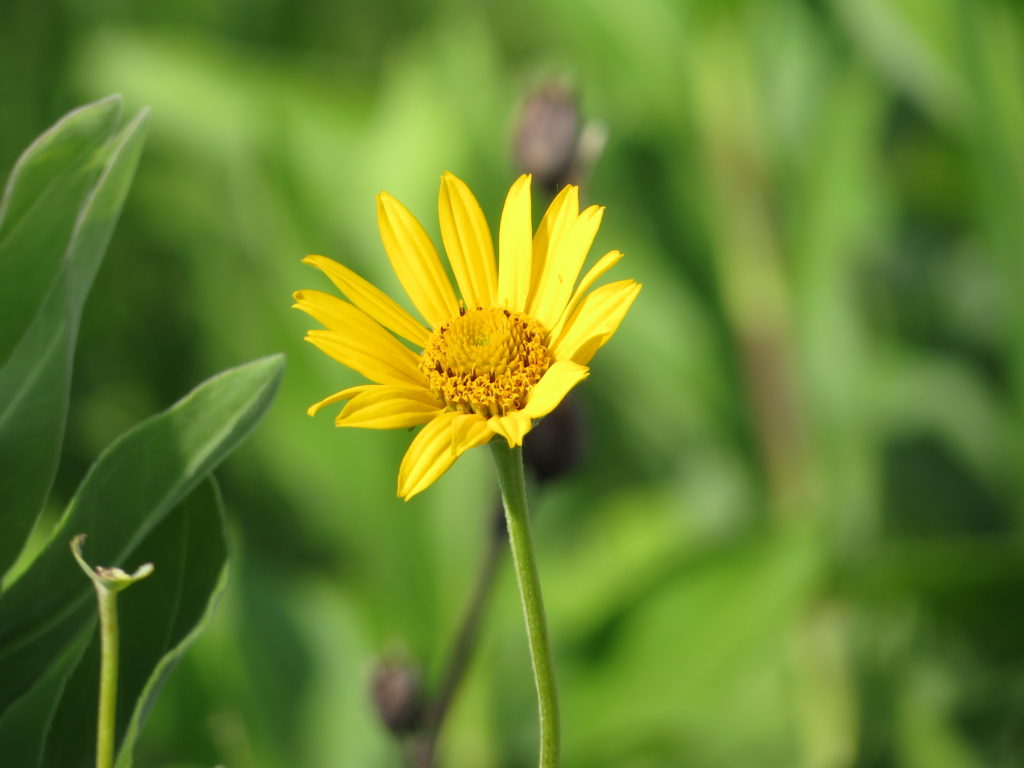
My joy in witnessing a Monarch migration happened more than eight years ago—before I began writing my blog. Since that time, fewer butterflies of all kinds visited our gardens. I noticed fewer Monarchs on our hikes. It is a complicated, complex problem with no one in particular responsible for the solution. The statistics are jarring, and Nature-lovers feel sad and angry when they hear the news but powerless in the big picture of our world. Is it loss of habitat—we are personally leaving and cultivating all the Milkweeds we can—or are the populations of butterflies actually being killed by pesticides and by microwave radiation from cell towers that have proliferated in the last ten years? (please read the scientific research below) In civilizations and centuries past, plants have been seen and named as ‘sacred,’ just as all of creation has been deemed so by Christianity and other world religions. I am not an alarmist by nature, but the news of the rapid rate of decline of our favorite butterfly is cause for alarm. Because biologically, what is destroying butterflies, bees, and trees is destroying us, just at a slower pace. We are all connected with all of Nature. I don’t know what the answers are either, but I want all of us to be aware, concerned, and thinking about the big picture in our choices, our votes, and our advocacy. We don’t want any more empty homes.
Very thought provoking.
It’s an issue we will all have to come to terms with in the future.